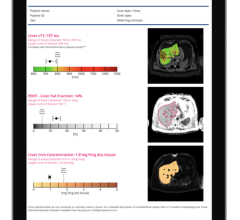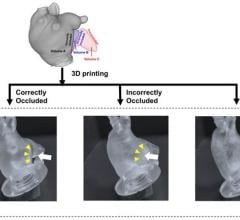
Vantage Titan 3.0T MR
November 21, 2013 – One of the biggest complaints patients have with MR imaging is the loud acoustic noise. The sound produced by the powerful gradients makes patients uncomfortable. This discomfort results in longer exams and sometimes poor image quality because patients can’t stay still. Toshiba America Medical Systems, Inc. is helping clinicians improve the MR experience with its Pianissimo technology. Pianissimo is a hardware solution that reduces gradient acoustic noise, producing the quietest MR exam on every sequence.
Introduced in 1999, Toshiba’s Pianissimo technology has helped MR customers solve this problem for nearly 15 years. Clinicians at Winn Army Community Hospital, who installed Toshiba’s Vantage Titan 3T, were surprised by how much noise was reduced. “Recently, we conducted an MR exam with one of our lieutenants, who asked if the system was on because it was so quiet. The noise-reduction technology truly addresses one of the major compliance issues in MR,” said Brad Wilkes, MRI technologist, Winn Army Community Hospital.
Pianissimo reduces MR acoustic noise by up to 90 percent or 33 dB(A) on every single sequence on both 1.5T and 3T systems. It accomplishes this through an innovative hardware solution that includes a vacuum-sealed gradient coil and sound-dampening materials built into the system. It also helps minimize gradient vibration, producing higher overall image quality. Pianissimo is available as standard technology on Toshiba’s entire Vantage MR product line so customers don’t have to pay extra to make their patients comfortable.
“Toshiba was the first in the industry to introduce a quieter MR system and we’ve continued to focus on improving the patient experience,” said Beverly Plost, director, MR Business Unit, Toshiba. “Instead of sounding like a jackhammer, the system ensures that patients hear much less noise during exams, putting them at ease and allowing clinicians to get accurate diagnoses as quickly as possible.”
For more information: www.medical.toshiba.com


 October 31, 2025
October 31, 2025 








